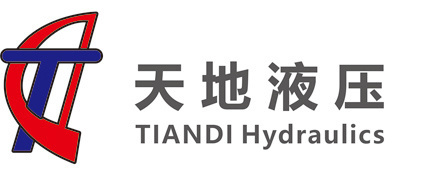GET THE LATEST NEWS FROM THE COMPANY
NEWS CATEGORY
Understanding Bi-Directional Relief Valves: Essential Insights for Industrial Applications
Published:
2025-06-30 13:00
---
Bi-directional relief valves are critical components in various industrial systems, designed to regulate pressure and ensure safe operation across a wide range of applications. Unlike traditional relief valves that only allow flow in one direction, bi-directional relief valves are engineered to handle pressure relief in both directions. This unique capability makes them invaluable in systems where flow directions can change, such as in hydraulic systems and pneumatic applications.
The primary function of bi-directional relief valves is to maintain a consistent pressure level within a system. When pressure exceeds a predetermined threshold, the valve opens to allow fluid to escape, thereby protecting other components from damage due to overpressure. This feature is particularly important in systems that experience fluctuating pressure or require a reliable means of pressure control under varying operational conditions.
One of the significant advantages of bi-directional relief valves is their ability to improve system efficiency. By allowing fluid to escape in both directions, these valves prevent pressure buildup and ensure that the system operates smoothly. This capability reduces the risk of equipment failure and prolongs the lifespan of machinery, ultimately leading to lower maintenance costs and improved productivity.
Applications of bi-directional relief valves span various industries, including manufacturing, automotive, and aerospace. In hydraulic systems, for example, these valves play a crucial role in controlling the flow of hydraulic fluid, ensuring that machinery operates within safe pressure limits. Similarly, in pneumatic systems, they help manage air pressure, preventing potential hazards and ensuring that equipment operates efficiently.
When selecting a bi-directional relief valve for your application, it is essential to consider several factors. The valve's pressure settings, flow capacity, and compatibility with the fluid being used are all crucial elements that can impact performance. Additionally, it is important to assess the operating environment, as factors such as temperature and potential exposure to corrosive substances can influence the valve's effectiveness and longevity.
In conclusion, bi-directional relief valves are vital components in modern industrial systems, providing essential pressure management and enhancing operational efficiency. Their unique ability to relieve pressure in both directions makes them an ideal choice for dynamic systems that require reliable performance. Understanding the functionality and applications of these valves is crucial for anyone involved in the design, maintenance, or operation of industrial equipment. By incorporating bi-directional relief valves into your systems, you can ensure a safer, more efficient operational environment.
Bi-directional relief valves are critical components in various industrial systems, designed to regulate pressure and ensure safe operation across a wide range of applications. Unlike traditional relief valves that only allow flow in one direction, bi-directional relief valves are engineered to handle pressure relief in both directions. This unique capability makes them invaluable in systems where flow directions can change, such as in hydraulic systems and pneumatic applications.
The primary function of bi-directional relief valves is to maintain a consistent pressure level within a system. When pressure exceeds a predetermined threshold, the valve opens to allow fluid to escape, thereby protecting other components from damage due to overpressure. This feature is particularly important in systems that experience fluctuating pressure or require a reliable means of pressure control under varying operational conditions.
One of the significant advantages of bi-directional relief valves is their ability to improve system efficiency. By allowing fluid to escape in both directions, these valves prevent pressure buildup and ensure that the system operates smoothly. This capability reduces the risk of equipment failure and prolongs the lifespan of machinery, ultimately leading to lower maintenance costs and improved productivity.
Applications of bi-directional relief valves span various industries, including manufacturing, automotive, and aerospace. In hydraulic systems, for example, these valves play a crucial role in controlling the flow of hydraulic fluid, ensuring that machinery operates within safe pressure limits. Similarly, in pneumatic systems, they help manage air pressure, preventing potential hazards and ensuring that equipment operates efficiently.
When selecting a bi-directional relief valve for your application, it is essential to consider several factors. The valve's pressure settings, flow capacity, and compatibility with the fluid being used are all crucial elements that can impact performance. Additionally, it is important to assess the operating environment, as factors such as temperature and potential exposure to corrosive substances can influence the valve's effectiveness and longevity.
In conclusion, bi-directional relief valves are vital components in modern industrial systems, providing essential pressure management and enhancing operational efficiency. Their unique ability to relieve pressure in both directions makes them an ideal choice for dynamic systems that require reliable performance. Understanding the functionality and applications of these valves is crucial for anyone involved in the design, maintenance, or operation of industrial equipment. By incorporating bi-directional relief valves into your systems, you can ensure a safer, more efficient operational environment.
Bi-directional Relief valves
previous page
previous page
Related news
2025-06-30
2025-06-28

